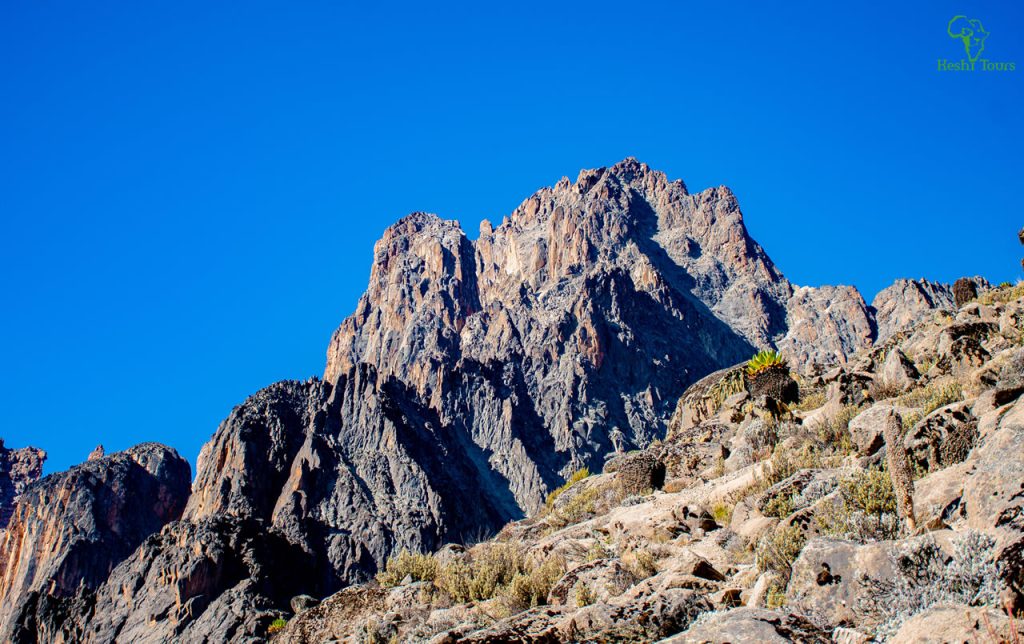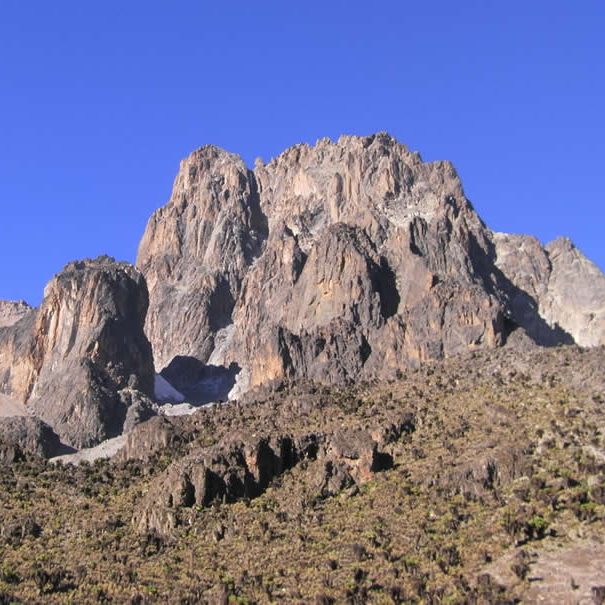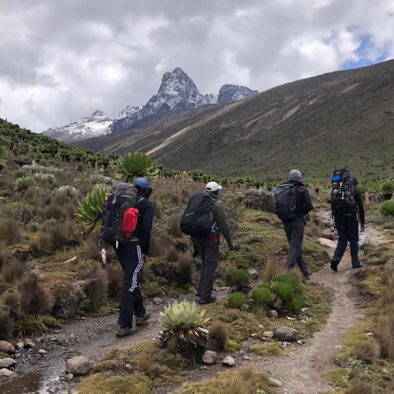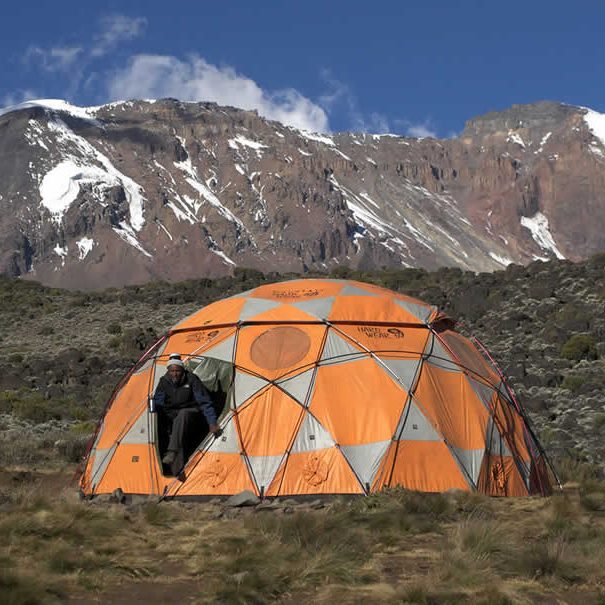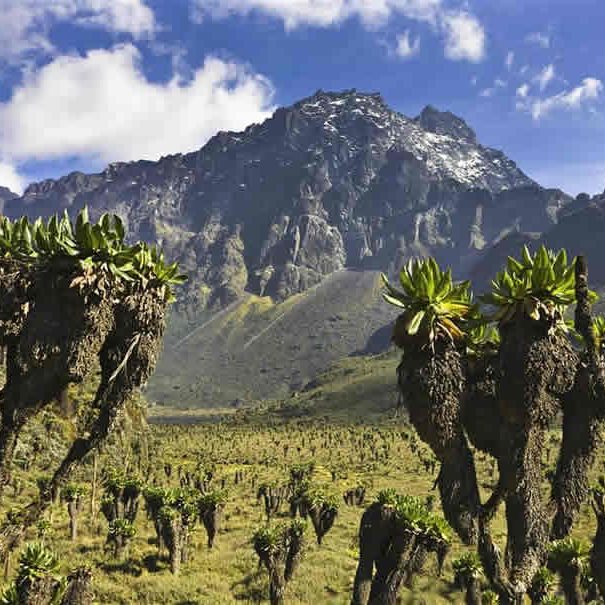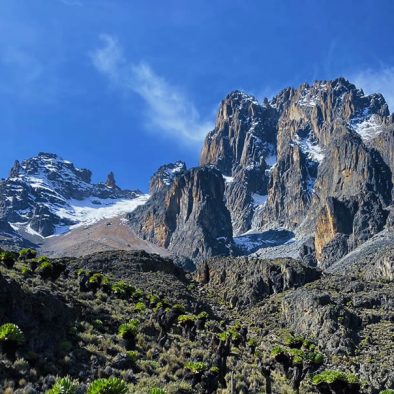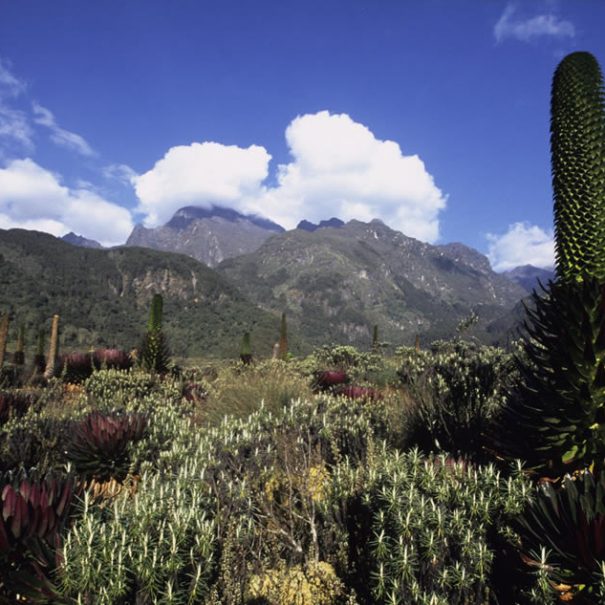In the heart of East Africa, where the equator marks a distinct line on the Earth’s surface, lies an enigmatic and towering presence that has captured the imaginations of adventurers for centuries – Mount Kenya. Standing as the second-highest peak on the African continent, it is a majestic testament to nature’s grandeur and a symbol of Kenya’s rich and diverse landscapes. As we look ahead to 2024, the allure of Mount Kenya beckons explorers and mountaineers from around the world, promising an expedition filled with challenges, breathtaking vistas, and encounters with a unique blend of biodiversity. In this comprehensive guide, we embark on a journey to uncover the many facets of climbing Mount Kenya, from its geographical location to the intricate details of preparation, routes, costs, and invaluable tips that will help you conquer this iconic African summit. Join us as we delve into the heart of East Africa and explore the wonders of Mount Kenya in all its glory.
Location of Mount Kenya and Geographical Coordinates
Mount Kenya is located in East Africa, straddling the equator and situated within Kenya’s borders. It is approximately 150 kilometers (93 miles) northeast of Nairobi, the capital city of Kenya. The mountain lies in the central part of the country and is part of the central highlands of Kenya. Geographically, Mount Kenya is positioned between two counties, namely, Nyeri to the west and Meru to the east.
The geographical coordinates of Mount Kenya pinpoint its exact location on the Earth’s surface:
- Latitude: Mount Kenya is located at approximately 0.15 degrees south of the equator. The latitude coordinates vary slightly depending on the specific point on the mountain but generally range from about 0.10 to 0.25 degrees south.
- Longitude: The mountain is situated at roughly 37.30 degrees east of the prime meridian. Again, the longitude may vary slightly at different points on the mountain’s perimeter.
These geographical coordinates place Mount Kenya in a prime position, making it easily accessible for climbers and adventurers from around the world. The equatorial location not only contributes to its unique climate but also adds to the allure of ascending this iconic African peak.
The central location of Mount Kenya within Kenya’s borders makes it a convenient destination for both domestic and international travelers. Nairobi, the country’s largest city and international gateway, serves as a major transportation hub for climbers and tourists embarking on their journey to conquer the mountain. From Nairobi, it’s a relatively short distance by road to the towns and villages that serve as the primary bases for Mount Kenya expeditions, such as Nanyuki and Chogoria.
Mount Kenya’s strategic location in the heart of Kenya also means that climbers can experience the rich cultural diversity and natural wonders that the country has to offer, from the vibrant culture of the local Kikuyu and Meru communities to the breathtaking wildlife in nearby national parks and reserves.
The Size of Mount Kenya
Mount Kenya, a dormant stratovolcano, is a massive and complex mountain, boasting impressive dimensions that contribute to its unique character and allure. Understanding the size of Mount Kenya involves considering various aspects such as its elevation, prominence, and extent.
Elevation:
Highest Point: The highest peak of Mount Kenya is Batian, which stands at an impressive elevation of approximately 5,199 meters (17,057 feet) above sea level. These lofty summit challenges climbers with its technical climbing routes and offers an unrivaled sense of achievement when conquered.
Other Major Peaks: Besides Batian, Mount Kenya features two other notable peaks: Nelion, with an elevation of about 5,188 meters (17,021 feet), and Lenana, the third-highest peak at approximately 4,985 meters (16,355 feet). Point Lenana is a popular trekking destination for those who want to experience the beauty of Mount Kenya without the technical challenges of the higher peaks.
Mount Kenya has a remarkable topographical prominence, which is the height of a mountain’s summit above the lowest contour line encircling it and no higher summit. Its prominence is estimated to be around 3,150 meters (10,330 feet). This means that Mount Kenya rises dramatically from the surrounding plains and foothills, making it a prominent and easily identifiable mountain from a distance.
The base of Mount Kenya spans a substantial area, covering approximately 519 square kilometers (200 square miles). The mountain’s massive footprint encompasses a diverse range of ecosystems, from lush montane forests to high alpine moorlands, each with its unique flora and fauna.
The entire Mount Kenya National Park and Reserve, which protects the mountain and its surrounding environment, covers an even larger area, totaling about 715 square kilometers (276 square miles).
The size of Mount Kenya, both in terms of elevation and geographical extent, contributes to its ecological significance and its appeal to climbers, trekkers, and nature enthusiasts. Its varied landscapes offer a wide range of experiences, from challenging technical climbs to leisurely hikes through pristine wilderness. The mountain’s elevation and prominence ensure that it remains a prominent feature on the African continent, attracting adventurers seeking to conquer its lofty peaks and explore its diverse ecosystems. Whether viewed from a distance or experienced up close, the size of Mount Kenya is an integral part of its allure and mystique.
Why Mount Kenya: Exploring the Allure of Africa’s Second-Highest Peak
Choosing a mountain to climb is not a decision to be taken lightly. It involves careful consideration of personal goals, interests, and the unique appeal of the mountain in question. When it comes to Mount Kenya, there are several compelling reasons why this majestic peak is a top choice for mountaineers and adventurers from around the world.
- Breathtaking Natural Beauty
Mount Kenya boasts some of the most stunning and diverse landscapes in Africa. Its slopes are adorned with lush montane forests, bamboo thickets, and pristine alpine moorlands. As you ascend, the scenery changes dramatically, offering breathtaking views of glaciers, tarns, and rugged volcanic rock formations. The mountain’s sheer natural beauty is a powerful draw for those seeking an immersive wilderness experience.
- Varied Climbing Experiences
Mount Kenya caters to a wide range of climbing abilities and preferences. Whether you’re an experienced alpinist looking to conquer technical routes on Batian and Nelion or a trekker seeking a less demanding adventure up Point Lenana, the mountain offers a diverse array of climbing experiences. This inclusivity makes it an ideal destination for both seasoned mountaineers and novices.
- Rich Biodiversity:
The Mount Kenya National Park and Reserve, which encompasses the mountain and its surroundings, is a UNESCO World Heritage Site. It is renowned for its remarkable biodiversity, housing numerous plant and animal species found nowhere else on Earth. As you climb, you may encounter unique wildlife such as elephants, buffaloes, leopards, and rare bird species like the Hartlaub’s turaco. This makes a trek up Mount Kenya not just a physical challenge but also an opportunity to connect with nature.
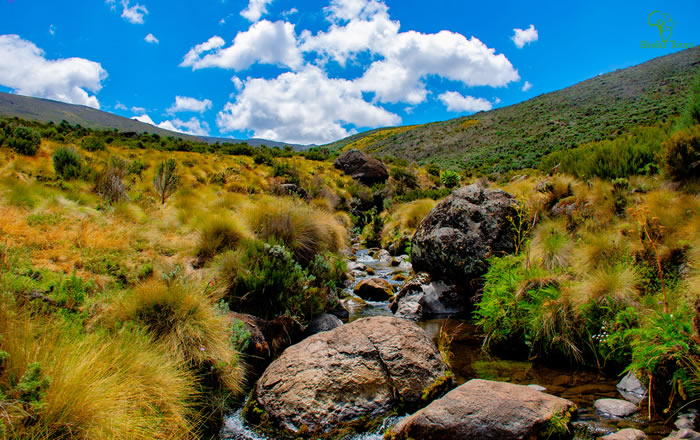
- Cultural Encounters:
Mount Kenya is situated in an area inhabited by various ethnic communities, including the Kikuyu, Meru, and Embu people. Exploring the region allows climbers to engage with these communities, experience their rich cultures, and gain insights into their traditional practices. You can visit local villages, interact with the residents, and learn about their way of life, adding a cultural dimension to your adventure.
- Access and Location:
Mount Kenya’s strategic location near Nairobi, Kenya’s capital, makes it easily accessible for international travelers. Nairobi serves as a gateway to the mountain, with well-developed transport infrastructure connecting the city to the major base towns of Nanyuki and Chogoria. This accessibility is a practical advantage for climbers and adventurers.
- A Sense of Achievement:
Standing on the summit of Mount Kenya is a remarkable accomplishment. At over 5,000 meters above sea level, it offers a profound sense of achievement and adventure, especially for those who have never experienced high-altitude climbing before. The journey to the summit is not just a physical endeavor but also a test of mental fortitude and determination.
- Unique Climbing Challenges:
Mount Kenya presents unique challenges that set it apart from other mountains. The equatorial location means you can encounter diverse weather conditions, from tropical rainforests to snow and ice. Technical climbing skills may be required for the highest peaks, and the mountain’s volcanic history adds a layer of geological interest to the climb.
- Conservation and Preservation:
Climbing Mount Kenya contributes to the preservation of its fragile ecosystems. Responsible tourism and climbing practices are essential to protect the mountain’s environment and ensure its sustainability for future generations.
Duration of the Climb: Navigating Timeframes on Mount Kenya
The duration of a climb on Mount Kenya can vary significantly depending on several factors, including the chosen route, climber’s experience, fitness level, and acclimatization needs. The mountain offers a range of climbing options, each with its own estimated timeframes. Below, we delve into the details of the duration of the climb, breaking it down by routes and highlighting key considerations:
Climbing Routes:
- Naro Moru Route:
Timeframe: Typically, the Naro Moru Route is the shortest and quickest option for reaching Point Lenana, the most accessible of Mount Kenya’s major peaks. This route can be completed in about 3 to 4 days, making it ideal for those with limited time or seeking a less strenuous climb.
Highlights: While it offers a quicker ascent, the Naro Moru Route still provides stunning views and encounters with the mountain’s unique flora and fauna.
- Sirimon Route:
Timeframe: The Sirimon Route is a slightly longer option compared to Naro Moru, usually taking 4 to 5 days to reach Point Lenana. This route allows for better acclimatization due to a more gradual ascent.
Highlights: Climbers on the Sirimon Route enjoy the scenic views of the Sirimon Valley and the opportunity to traverse the Mackinder’s Valley, known for its stunning scenery.
- Chogoria Route:
Timeframe: The Chogoria Route is among the longer routes, generally requiring 5 to 6 days to reach Point Lenana. However, it is a favorite for those who appreciate a more remote and scenic trek.
Highlights: This route takes climbers through lush bamboo forests, the picturesque Gorges Valley, and past pristine tarns, offering some of the most beautiful natural landscapes on the mountain.
- Technical Routes (Batian and Nelion):
Timeframe: Climbing Batian or Nelion, the highest peaks of Mount Kenya, demands a more extended timeframe, typically ranging from 6 to 8 days or more, depending on the specific route and climber’s skill level.
Highlights: Technical routes to Batian and Nelion require advanced climbing skills and mountaineering experience. These ascents provide the ultimate challenge and reward with breathtaking vistas.
- Customization:
The duration of your climb can be customized to suit your preferences and abilities. Some climbers may choose a faster ascent, while others opt for a more leisurely pace to savor the journey and acclimatize effectively. Climbers on guided expeditions may follow established itineraries designed to optimize acclimatization and safety. These itineraries often include specific daily mileage and rest days.
The time of year you choose to climb Mount Kenya can also influence the duration of your climb. In the dry season, conditions may be more favorable, allowing for shorter durations, whereas in the wet season, challenges like mud and rain could extend the climb.
Cost of Climbing Mount Kenya: Exploring Options and Price Ranges by Keshi Tours
Climbing Mount Kenya is a remarkable adventure, but like any expedition, it comes with associated costs that vary depending on your preferences, group size, and the specific route chosen. Below, we explore the cost of climbing Mount Kenya by considering different tour options and their respective price ranges.
5-Day Sirimon to Chogoria Mt Kenya Climbing ($750 to $900 per person USD):
- Tour Type: Budget tour using mountain huts and bandas.
- Group Size: This is a shared tour with a maximum of 20 people per group.
- Flexibility: This tour can start on any day if availability permits but cannot be customized.
- Suitable for Solo Travelers: Single travelers can join this group tour, but it requires a minimum of 2 people to run.
- Included: The cost covers accommodation in budget mountain huts and bandas, as well as meals as specified in the itinerary.
4-Day Mt Kenya Narumoru Route Package ($600 to $750 per person USD):
- Tour Type: Budget tour focusing on the Narumoru Route.
- Group Size: The group size is not specified, but it’s likely to be a shared tour.
- Flexibility: The tour can start on any day.
- Customization: This tour does not allow changes to accommodations or destinations.
- Suitable for Solo Travelers: The minimum age for this tour is 18 years.
- Included: The cost includes accommodation in budget mountain huts and meals as indicated in the itinerary.
7-Day Rock Climbing on Mt Kenya North Face Route ($1,400 to $1,700 per person USD):
- Tour Type: This tour is designed for rock climbing enthusiasts.
- Group Size: The group size is not specified.
- Flexibility: The tour is best done from June to Early October and follows the North Face standard route.
- Included: The cost includes accommodation in budget mountain huts and meals as specified.
8-Day Mt Kenya Rock Climbing via Chogoria Route ($1,499 per person USD):
- Tour Type: A budget camping tour via the Chogoria Route.
- Group Size: This tour is organized exclusively for you and won’t be shared with others.
- Flexibility: The tour can start on any day and can be customized.
- Suitable for Solo Travelers: Solo travelers can book this private tour, with a minimum age requirement of 18 years.
- Included: The cost includes accommodation in budget bandas and meals as indicated in the itinerary.
3-Day Mt Kenya to the Peak-Sirimon Route ($400 to $520 per person USD):
- Tour Type: Another budget tour using mountain huts.
- Group Size: This is a shared tour with a maximum of 60 people per group.
- Flexibility: The tour can start on any day but cannot be customized.
- Suitable for Solo Travelers: Single travelers can join this group tour, with a minimum age requirement of 18 years.
It’s important to note that the cost of climbing Mount Kenya often includes essential elements such as accommodation, meals, park fees, guides, and sometimes equipment rental. However, additional expenses, such as travel to and from Nairobi (the gateway to Mount Kenya), personal gear, and gratuities, should also be factored into your budget.
The variation in costs among these tour options reflects differences in the level of comfort, customization, and activities included. When planning your Mount Kenya expedition, it’s advisable to carefully review the details of each tour, assess your preferences and requirements, and budget accordingly to ensure a safe and enjoyable climb of this iconic African peak.
Comparing the Difficulty of Mount Kenya Routes
Mount Kenya offers a range of climbing routes, each with its own level of difficulty, scenic beauty, and unique challenges. The choice of route depends on your climbing experience, preferences, and desire for adventure. Let’s compare the various routes in terms of difficulty and other factors:
- Sirimon Route:
Difficulty: The Sirimon Route is often considered the easiest ascent of Mount Kenya. It offers a relatively gradual and steady ascent with no technical climbing or exposed summit ridges.
Duration: A 5-day/4-night climb is recommended for this route.
Highlights: This route allows climbers to acclimatize effectively, with a relatively short final summit night. The absence of exposed ridges makes it suitable for those who prefer a less challenging ascent.
- Naro Moru Route:
Difficulty: The Naro Moru Route is more scenic but also more challenging than the Sirimon Route. The second day includes navigating the ‘Vertical Bog,’ which can be demanding, especially in rainy conditions. The summit night involves a longer walk-in to reach the scree slope and a Via Ferrata (a protected climbing route) along the exposed ridge.
Duration: A 5-day/4-night climb is typically recommended, with an optional alternative descent via the Sirimon Route.
Highlights: This route offers diverse vegetation, a chance to spot wildlife, and a unique Via Ferrata experience. It suits climbers seeking a bit more adventure.
- Traverse Route (Ascend Naro Moru/Descend Chogoria):
Difficulty: The Traverse Route combines two challenging and scenic routes, making it a more demanding option. It involves the Naro Moru ascent and the Chogoria descent.
Duration: The standard itinerary is 5 days/4 nights, with the possibility of adding an extra night.
Highlights: This route offers stunning views, lakes, cliffs, waterfalls, and diverse flora and fauna. Climbers experience the best of both worlds with the Naro Moru and Chogoria routes.
- Summit Circuit:
Difficulty: The Summit Circuit is a 6-day/5-night itinerary, similar to the Traverse Route. It offers more time in and around the summit circuit, including acclimatization treks to tarns, exploration of cols, ridges, and glaciers.
Duration: This route is suitable for those with extra time to spare, seeking a comprehensive Mount Kenya experience.
Highlights: Climbers can explore unique features, including the search for ‘Icy Mike,’ the remains of an elephant that attempted to climb Mount Kenya. The Summit Circuit provides an immersive alpine experience.
- Batian and Nelion (Technical Climbs):
Difficulty: Climbing Batian and Nelion, the highest peaks of Mount Kenya, requires advanced technical climbing skills and experience. These multi-pitch technical climbs are challenging and demand careful preparation.
Duration: Climbs on Batian or Nelion often include a trek to Point Lenana and tend to follow a summit circuit itinerary for trekking ascents and descents.
Season: The best times for technical climbs are typically from June to August, with September and October also suitable for North Face routes. January- February is an option for climbs via the South East Face.
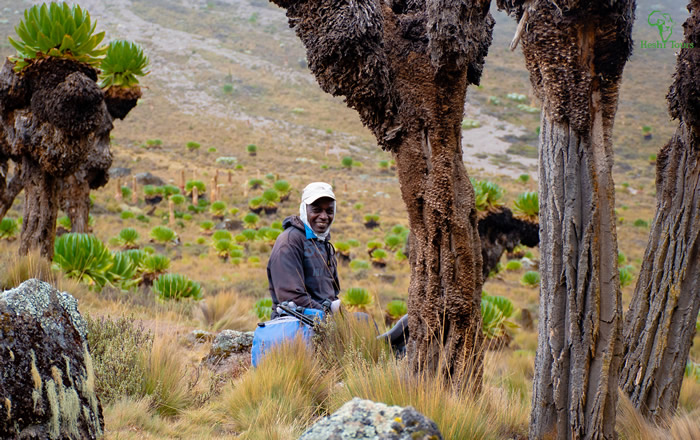
Preparation for Climbing Mount Kenya
Climbing Mount Kenya is a rewarding adventure, but it requires thorough preparation to ensure a safe and enjoyable experience. Adequate preparation involves physical fitness, acclimatization, gear selection, and knowledge of the mountain’s challenges.
- Physical Fitness:
Aerobic Fitness: Climbing Mount Kenya involves hiking at high altitudes for extended periods. Build aerobic endurance through activities such as running, hiking, cycling, and stair climbing.
Strength Training: Strengthen your leg muscles, core, and upper body to carry a backpack and navigate challenging terrain.
Flexibility: Stretch regularly to improve flexibility, which helps prevent injuries on steep and uneven trails.
- Acclimatization:
Altitude Training: If possible, spend time at high altitudes before the climb to acclimatize. Activities like trekking at lower elevations or sleeping in a hypoxic tent can help.
Gradual Ascent: Choose routes that allow for gradual ascent, which aids acclimatization and reduces the risk of altitude sickness.
- Health and Medical Considerations:
Medical Check-Up: Consult a healthcare professional for a pre-climb medical check-up. Discuss any pre-existing health conditions and seek advice on altitude-related medications.
Vaccinations: Check if any vaccinations or medications are required before traveling to Kenya.
First Aid Kit: Assemble a comprehensive first aid kit that includes bandages, antiseptic wipes, pain relievers, and medications for common ailments.
Altitude Sickness Prevention: Familiarize yourself with the symptoms of altitude sickness and carry appropriate medications (e.g., acetazolamide) as a precaution.
- Training Hikes:
Gradually increase the difficulty and duration of your training hikes. Practice carrying a loaded backpack to simulate the weight you’ll carry on Mount Kenya.
Include steep and uneven terrain in your training hikes to prepare for the mountain’s challenges.
- Mental Preparation:
Develop a positive and determined mindset. Mental strength is crucial for overcoming challenges on the mountain.
Educate yourself about the mountain, its history, and the challenges you may encounter. Knowledge can boost confidence.
- Climbing Permits and Documentation:
Ensure you have all necessary climbing permits and documentation. Research entry requirements and visa regulations for Kenya.
Carry photocopies of important documents like your passport, climbing permits, and travel insurance details.
- Guides and Porters:
Consider hiring experienced local guides and porters. They provide valuable support, share knowledge, and enhance safety.
Discuss logistics, fees, and responsibilities with your guides and porters in advance.
- Hydration and Nutrition:
Stay well-hydrated throughout the climb. Dehydration can exacerbate altitude-related issues.
Pack high-energy snacks and meals suitable for high-altitude trekking. Include a mix of carbohydrates, proteins, and fats.
- Travel Insurance:
Purchase comprehensive travel insurance that covers medical emergencies, trip cancellations, and evacuation from high altitudes.
- Respect for the Environment and Local Communities:
Adhere to Leave No Trace principles to minimize your environmental impact.
Respect local customs, traditions, and cultures. Engage with the local community in a culturally sensitive manner.
- Emergency Plan:
Familiarize yourself with the emergency procedures and communication methods on the mountain. Share your itinerary with a trusted contact who can alert authorities if necessary.
- Group Dynamics:
If climbing with a group, establish clear roles and responsibilities. Discuss expectations and communication protocols to ensure a harmonious climb.
Mount Kenya Climbing Equipment
Having the right equipment is crucial for a successful and safe climb of Mount Kenya. The equipment you need can vary depending on the route, weather conditions, and your specific climbing plans. Here’s the essential equipment you should consider for your Mount Kenya adventure:
- Clothing:
Base Layers: Moisture-wicking and breathable base layers are essential to keep sweat away from your skin and regulate body temperature. Consider both tops and bottoms.
Insulating Layers: Fleece or down jackets provide warmth during cold spells and at higher altitudes.
Waterproof Shell: A high-quality, waterproof and windproof jacket and pants are vital to protect against rain, snow, and strong winds.
Gloves: Insulated, waterproof gloves with good dexterity are crucial for maintaining hand warmth.
Headwear: A warm beanie or balaclava and a sun hat or cap for protection from the sun are necessary.
Socks: Moisture-wicking, warm socks with good cushioning and proper fit are essential for comfort.
- Footwear:
Hiking Boots: Choose waterproof, comfortable, and supportive hiking boots with good ankle support. Ensure they are broken in before your climb.
Gaiters: These protect your lower legs and boots from rain, snow, and debris, keeping your feet dry.
- Backpack:
Select a comfortable and appropriately sized backpack with enough capacity to carry your gear and clothing. Look for features like padded shoulder straps and a waist belt for comfort.
- Sleeping Gear:
Sleeping Bag: Invest in a high-quality sleeping bag rated for cold temperatures, especially if you’re camping at higher altitudes. Down or synthetic options are available.
Sleeping Pad: A lightweight, insulated sleeping pad provides comfort and insulation from the cold ground.
- Climbing Gear (for Technical Routes, Batian, and Nelion):
Helmet: A climbing helmet is essential for protection from falling rocks and ice.
Harness: Choose a comfortable climbing harness for technical routes.
Ropes and Hardware: Depending on your climbing plans, you may need ropes, carabiners, and other hardware for protection and safety.
Crampons: For icy conditions, crampons provide traction on steep slopes.
Ice Axe: An ice axe is necessary for self-arresting in case of a slip on icy terrain.
- Trekking Poles:
Adjustable trekking poles help with balance, reduce strain on your knees, and provide support during descents.
- Headlamp:
A reliable headlamp with spare batteries is essential for early morning starts and navigating in the dark.
- Navigation Tools:
A topographic map and compass or GPS device can help you stay on the right path, especially on less-traveled routes.
- First Aid Kit:
Assemble a comprehensive first aid kit that includes bandages, antiseptic wipes, pain relievers, blister treatment, and any personal medications.
- Water and Filtration:
Carry enough water bottles or a hydration system for adequate hydration. A water purification method (e.g., water filter or purification tablets) ensures safe drinking water along the way.
- Sun Protection:
Sunscreen with a high SPF rating, lip balm with sunblock, and sunglasses with UV protection are essential for protecting your skin and eyes from intense sun exposure.
- Personal Items:
Include personal items such as identification, money, passport (if required), camera, and a journal for documenting your journey.
- Climbing Permit and Documentation:
Carry a copy of your climbing permit and any other essential documentation.
- Emergency Communication:
A satellite phone or two-way radio can be valuable for emergencies and communication with base camps or authorities.
The Best Time to Climb Mount Kenya: Choosing the Ideal Season
Selecting the right time to climb Mount Kenya is crucial for a safe and enjoyable experience. The mountain’s weather and conditions vary throughout the year, making some seasons more favorable than others. Here are the best times to consider for your Mount Kenya climb:
Dry Season (June to October):
June to August: This period is typically considered the best time for climbing Mount Kenya. It falls within Kenya’s long dry season and offers the most stable weather conditions. Highlights of this season include:
- Minimal rainfall, making it easier to navigate the trails.
- Clear skies and excellent visibility for stunning views of the surrounding landscapes.
- Comfortable temperatures during the day, though nights can be cold, especially at higher elevations.
Ideal conditions for technical climbs on Batian and Nelion.
September to October: These months extend the dry season and provide favorable climbing conditions. They are slightly warmer than the earlier months but remain relatively dry.
Short Dry Season (December to February):
December to February: This is another excellent period for climbing Mount Kenya. It coincides with Kenya’s short dry season and offers the following advantages:
- Lower rainfall, particularly in January and February, leading to less muddy and slippery terrain.
- Relatively warm temperatures during the day, making hiking more comfortable.
- Less crowded trails compared to the peak months of June to August.
- Good conditions for trekking and technical climbs.
Rainy Seasons (March to May and November):
March to May: This is the long rainy season in Kenya and is generally not recommended for climbing Mount Kenya. The drawbacks include:
- Frequent and heavy rainfall, leading to slippery and challenging trails.
- Reduced visibility due to mist and cloud cover.
- Increased risk of landslides and swollen rivers, making river crossings dangerous.
- Higher likelihood of altitude sickness due to poor acclimatization conditions.
November: November falls within the short rainy season, and climbing during this month can be challenging due to:
- Occasional heavy rainfall and unstable weather conditions.
- Reduced visibility, making navigation more difficult.
- Muddy and slippery trails, especially in the lower elevations.
- Potential delays and cancellations of climbs due to weather-related issues.
Factors to Consider When Choosing Your Climbing Season:
- Weather Tolerance: Your tolerance for cold, rain, and challenging conditions should influence your choice of climbing season. If you prefer milder weather, opt for the dry season.
- Crowds: Peak dry season months (June to August) tend to be busier on the mountain. If you prefer a quieter experience, consider climbing during the shoulder seasons (early June, September, or late December to February).
- Technical Climbs: If you plan to attempt Batian or Nelion, the best time is during the dry season (June to August) when ice and snow are less likely to be present.
- Photography: If photography is a priority, aim for clear skies and good visibility by climbing during the dry season.
- Budget: Prices for climbing permits and accommodations can vary seasonally, with peak dry season being the most expensive. Consider your budget when choosing your climbing dates.
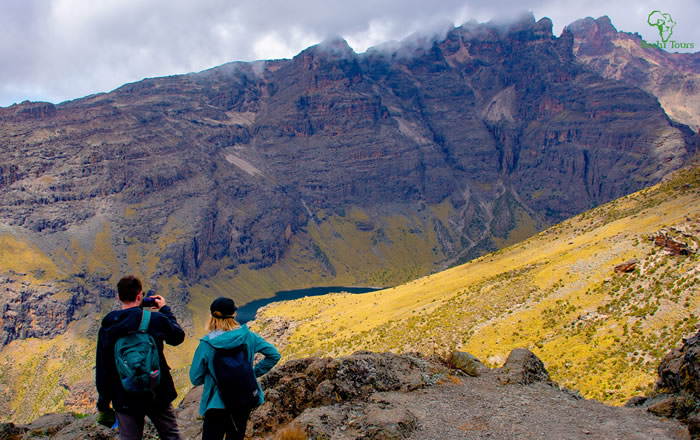
How to Get to Mount Kenya: Access and Transportation
Mount Kenya is located in central Kenya, and there are multiple ways to access the mountain, depending on your starting point and chosen route. Here’s a breakdown of how to get to Mount Kenya:
Nairobi to Nanyuki (Sirimon and Naro Moru Routes):
By Air: The most common starting point for Mount Kenya climbs is the town of Nanyuki. You can fly into Jomo Kenyatta International Airport in Nairobi, which is the main international airport in Kenya. From Nairobi, you can either take a domestic flight to Nanyuki Airport or arrange ground transportation to Nanyuki.
By Bus or Matatu: There are also bus services and matatus (shared minivans) that run between Nairobi and Nanyuki. The journey takes several hours and may include transfers, so be prepared for a longer trip.
Nairobi to Chogoria (Chogoria Route):
If you plan to start your climb from the Chogoria route, you can follow the same process as mentioned above to get to Nairobi. From Nairobi, you’ll need to travel to Chogoria, which is a small town near the mountain.
By Private Transportation:
Many tour operators and guides offer transportation services from Nairobi or Nanyuki to the starting points of various routes. This option provides convenience and ensures you reach the trailheads with ease.
Insurance for Climbing Mount Kenya: Protecting Your Adventure
Climbing Mount Kenya can be physically demanding and pose certain risks. It’s essential to have appropriate insurance coverage to protect yourself and your investment in the trip. Here are some insurance considerations:
Travel Insurance:
Purchase comprehensive travel insurance that covers medical emergencies, trip cancellations, and evacuations from high-altitude locations. Verify that it includes high-altitude trekking and climbing activities.
Health Insurance:
Check if your health insurance covers medical expenses incurred abroad. If not, consider supplemental health insurance that includes coverage for overseas medical treatments.
Emergency Evacuation Insurance:
Ascending to high altitudes increases the risk of altitude-related illnesses. Ensure your insurance includes coverage for helicopter evacuations, which may be necessary in case of emergencies.
Cancellation Insurance:
In case you need to cancel your trip due to unforeseen circumstances, such as a personal emergency or severe weather conditions, cancellation insurance can reimburse you for non-refundable expenses.
Gear and Equipment Insurance:
If you are renting climbing equipment, check whether the rental company provides insurance for gear loss or damage during the climb.
Climbing Mount Kenya Tips: Advice for a Successful Ascent
Climbing Mount Kenya is a challenging adventure that requires careful planning and preparation. Here are some tips to ensure a successful ascent:
- Choose the Right Route: Select a route that aligns with your climbing experience, fitness level, and goals. Consider the weather and season when making your choice.
- Acclimatize: Spend time at higher elevations before attempting the summit to acclimatize to the altitude. Plan rest days during your ascent for acclimatization.
- Stay Hydrated and Well-Nourished: Drink plenty of water to prevent dehydration at high altitudes. Pack energy-rich snacks and meals to maintain your energy levels.
- Listen to Your Body: Pay attention to your physical condition and any symptoms of altitude sickness. Descend if you experience severe symptoms like severe headaches or nausea.
- Travel with a Guide: Hiring an experienced local guide is highly recommended for safety and navigation, especially on less-traveled routes.
- Respect the Environment: Practice Leave No Trace principles to minimize your environmental impact. Dispose of waste properly and respect local customs and traditions.
- Layer Clothing: Dress in layers to adjust to changing weather conditions. It can be cold at night and warm during the day, so be prepared for both extremes.
- Stay Informed: Keep up-to-date with weather forecasts and trail conditions. Be flexible with your plans if weather conditions deteriorate.
- Pack Light: Carry only essential gear and clothing to minimize the weight of your backpack. Every extra pound can make a significant difference during a long climb.
- Emergency Communication: Carry a satellite phone or two-way radio for emergencies and communication with base camps or authorities.
Frequently Asked Questions (FAQs)
- What is the best time to climb Mount Kenya?
The best time to climb Mount Kenya is during the dry seasons, which are from June to August and December to February. These periods offer stable weather conditions and clear skies.
- Is it necessary to hire a guide to climb Mount Kenya?
While it’s not mandatory, it is highly recommended to hire an experienced local guide. Guides are familiar with the routes, can assist with navigation, and provide crucial support for safety.
- What permits are required to climb Mount Kenya?
Climbers need to obtain permits from the Kenya Wildlife Service (KWS) to access the mountain. The specific permit requirements and fees depend on the route and nationality.
- What are the accommodation options on Mount Kenya?
Accommodation options on Mount Kenya include mountain huts, bandas (huts), and camping. The availability of facilities varies depending on the route and altitude.
- Is it possible to rent climbing equipment on Mount Kenya?
Yes, many outfitters and guides offer rental equipment, including boots, sleeping bags, and tents. It’s essential to check the condition and quality of rental gear before the climb.
- Are there age restrictions for climbing Mount Kenya?
The minimum age for climbing Mount Kenya is typically 10 or 12 years old, depending on the route and the child’s physical fitness. Some routes may have higher age requirements due to their difficulty.
- What are the risks associated with climbing Mount Kenya?
Risks include altitude sickness, adverse weather conditions, steep terrain, and navigation challenges. Proper preparation, acclimatization, and following safety guidelines can mitigate these risks.
- Can I climb Mount Kenya without prior mountaineering experience?
Yes, you can climb Mount Kenya without prior mountaineering experience, especially if you choose less technical routes like Sirimon or Naro Moru. However, it’s advisable to be physically fit and well-prepared for the altitude.
- How long does it take to climb Mount Kenya?
The duration of a Mount Kenya climb varies depending on the route. It can range from 3 to 8 days, with additional time needed for acclimatization.
- Are there emergency rescue services on Mount Kenya?
Yes, there are emergency rescue services available on Mount Kenya in case of accidents or medical emergencies. It’s essential to carry a communication device for emergencies.

